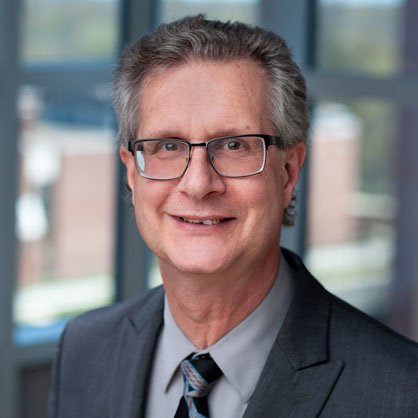Education
B.S., Biology, Xavier University, 1983
Ph.D., Biology, University of Kentucky, 1990
Post-doctoral training, University of Florida, College of Medicine, Department of
Obstetrics and Gynecology
Teaching interests
I primarily teach in the M.S. Cellular and Molecular Biology program that I created
for the University in 1995. My favorite courses are Cell Culture Techniques with Laboratory,
Cellular Biology and Protein Biochemistry and Enzymology, although I have taught nearly
all of the core courses in the program at one time or another.
See More
When I teach undergraduate courses, my favorite classes are Cell Biology, Developmental
Biology and Histology. These are classes that all emphasize the actions of individual
cells in the maintenance of the entire organism. Fully understanding each of these
topics is very important in understanding current pharmaceutical and medical advancements.
In the lectures, I stress problem solving and the ability to apply the material that
students learn in the course. I feel this is critical to being a strong scientist
and while this is tough for students at first, it makes our students very strong when
they complete the program. In the classes with laboratories, I go beyond this to also
insist that student become technically proficient in basic skill related to the lab.
For example, by the end of the Cell Culture course and the Cell Biology Laboratory,
our students are very strong at mammalian cell culture techniques and trouble shooting.
This has been very helpful to them as they have developed after our program.
Research
Bibliography
My work over the years has covered many topics from muscle development to cancers.
Most of my work has involved fertility and cancers. A listing of recent papers and
conference proceedings with students can be found here. A more complete listing of my bibliography is available at the NCBI link.
Recent student projects I have directed are listed in our Cellular and Molecular Biology
pages. Many of these have links to posters completed by the students. You can find
them at Rossi Lab Student Research.
